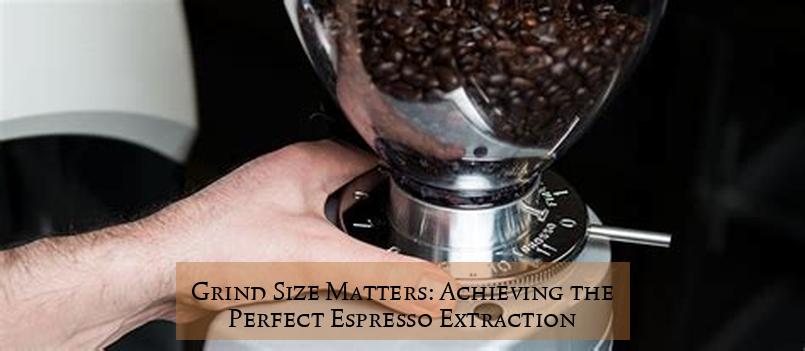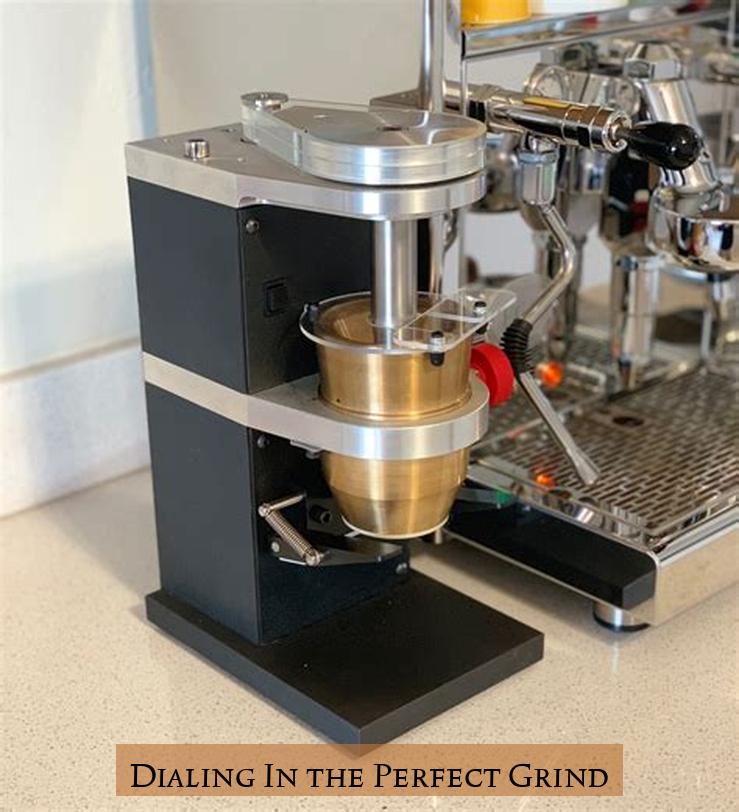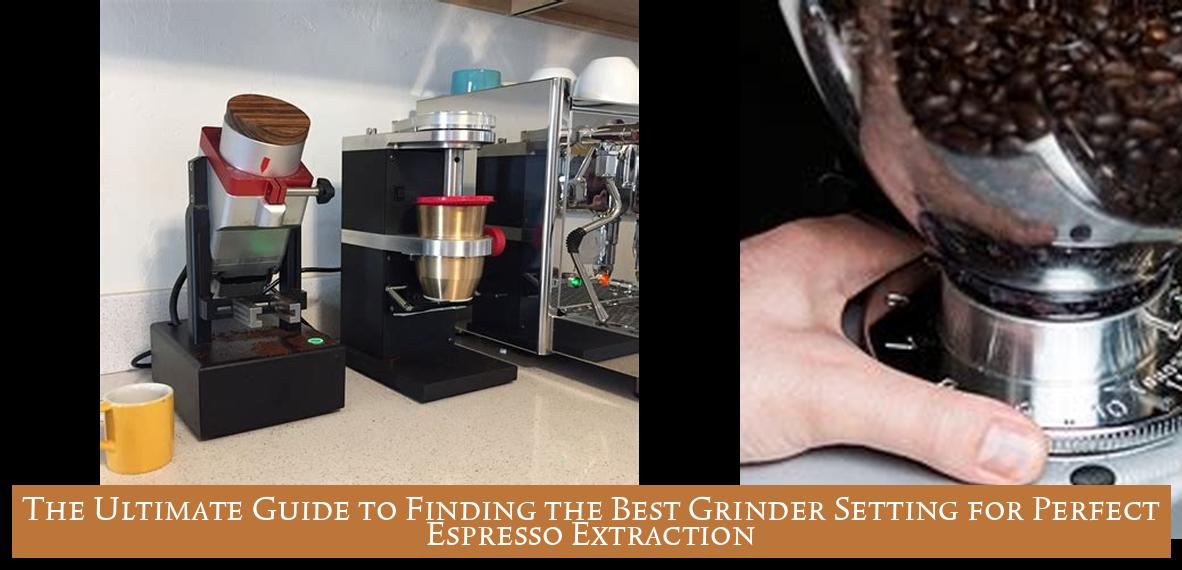Unlocking the secrets to the perfect espresso shot is every coffee lover’s quest. And at the heart of this pursuit lies a crucial question: What is the best grinder setting for espresso? In this comprehensive guide, we’ll delve into the art and science of achieving that elusive balance of flavors and aromas. From understanding grind size to choosing the right grinder, we’ll equip you with the knowledge and tips to elevate your espresso game. So, grab your favorite mug and get ready to embark on a caffeinated journey to espresso perfection!
Key Takeaways
- Espresso requires a fine grind to slow down the incoming water while allowing it to flow evenly.
- A good starting point for espresso grind is something just a little finer than granulated sugar.
- For Moka pots, a medium-fine grind is recommended, which is slightly coarser than espresso grind.
- Espresso and Turkish coffee require fine to extra-fine grinds, while French press and cold-brew machines need coarse grinds.
- When using a coffee grinder for espresso, a setting around 14-17 on some grinders or aiming for 30 pounds of pressure is recommended for a good espresso shot.
- Adjusting the grind size can lower brew pressure, and for espresso, the brew pressure should be about 9 bar.
Grind Size Matters: Achieving the Perfect Espresso Extraction

Every coffee enthusiast knows that the grind size plays a crucial role in determining the quality of your espresso. Too coarse a grind, and the water will rush through the coffee bed, resulting in a weak and sour shot. Too fine a grind, and the water will be impeded, leading to a bitter and astringent brew. Finding the optimal grind size is an art that requires experimentation and a deep understanding of the variables involved.
Espresso Extraction: A Delicate Balance
Espresso extraction is a complex process that involves the interaction of water, coffee grounds, and pressure. The grind size directly influences the flow rate of the water through the coffee bed, which in turn affects the extraction yield and flavor profile of the espresso. A finer grind will result in a slower flow rate, allowing for a longer extraction time and a more concentrated shot. Conversely, a coarser grind will lead to a faster flow rate and a less intense brew.
Dialing In the Perfect Grind

The ideal grind size for espresso will vary depending on the specific coffee beans used, the type of espresso machine, and the desired extraction time. However, there are some general guidelines that can help you get started:
- Start with a medium-fine grind, similar to granulated sugar.
- Adjust the grind size finer if the espresso is flowing too quickly (less than 25 seconds) or sour.
- Adjust the grind size coarser if the espresso is flowing too slowly (more than 30 seconds) or bitter.
Experimentation is Key
The best way to find the perfect grind size for your espresso is to experiment. Try different grind sizes and note the resulting extraction time and flavor profile. Keep a log of your experiments so that you can track your progress and identify the optimal settings for your particular setup.
Espresso Grinders: Choosing the Right Tool
The choice of espresso grinder is just as important as the grind size itself. A good grinder will provide consistent grinds, reducing the chances of channeling and ensuring an even extraction. There are two main types of espresso grinders: blade grinders and burr grinders.
Blade Grinders: A Budget-Friendly Option
Blade grinders are the more affordable option and are commonly found in home kitchens. They use a spinning blade to chop the coffee beans, resulting in a less consistent grind. This can lead to channeling and uneven extraction, but blade grinders can still produce a decent cup of espresso if used properly.
Burr Grinders: Precision Grinding for the Discerning Palate
Burr grinders use two rotating burrs to crush the coffee beans, producing a much more consistent grind than blade grinders. This results in a more even extraction and a better-tasting espresso. Burr grinders are more expensive than blade grinders but are worth the investment if you are serious about espresso.
Grinding Tips for a Perfect Espresso
Once you have chosen the right espresso grinder, there are a few additional tips you can follow to ensure you get the most out of your coffee:
For you, Mastering the Art of Espresso Grind: Avoiding the Pitfalls of Grinding Too Fine
- Use fresh, high-quality coffee beans. Stale or low-quality beans will not produce a good espresso, no matter how fine the grind.
- Clean your grinder regularly. Coffee oils can build up over time and affect the grind consistency.
- Purge the grinder before each use. This will remove any stale coffee grounds from the grinder and ensure that you are getting a fresh grind.
- Experiment with different grind sizes and extraction times to find the perfect combination for your taste.
Conclusion
Discover: Unveiling McDonald’s McCafe Espresso: The Art of Premium Arabica Beans
Finding the best grinder setting for espresso is a journey of experimentation and refinement. By understanding the principles of espresso extraction, choosing the right grinder, and following these tips, you can unlock the full potential of your espresso machine and enjoy the perfect cup of coffee every time.
What grind size is recommended for making espresso?
The recommended grind size for making espresso is a fine grind, slightly finer than granulated sugar.
What is the recommended grind size for Moka pots?
For Moka pots, a medium-fine grind is recommended, which is slightly coarser than espresso grind.
What grind size is suitable for French press and cold-brew machines?
French press and cold-brew machines require coarse grinds.
What setting is recommended for a coffee grinder when making espresso?
When using a coffee grinder for espresso, a setting around 14-17 on some grinders or aiming for 30 pounds of pressure is recommended for a good espresso shot.
How does adjusting the grind size affect brew pressure for espresso?
Adjusting the grind size can lower brew pressure, and for espresso, the brew pressure should be about 9 bar.
What is the ideal brew pressure for making espresso?
The ideal brew pressure for making espresso is about 9 bar.

